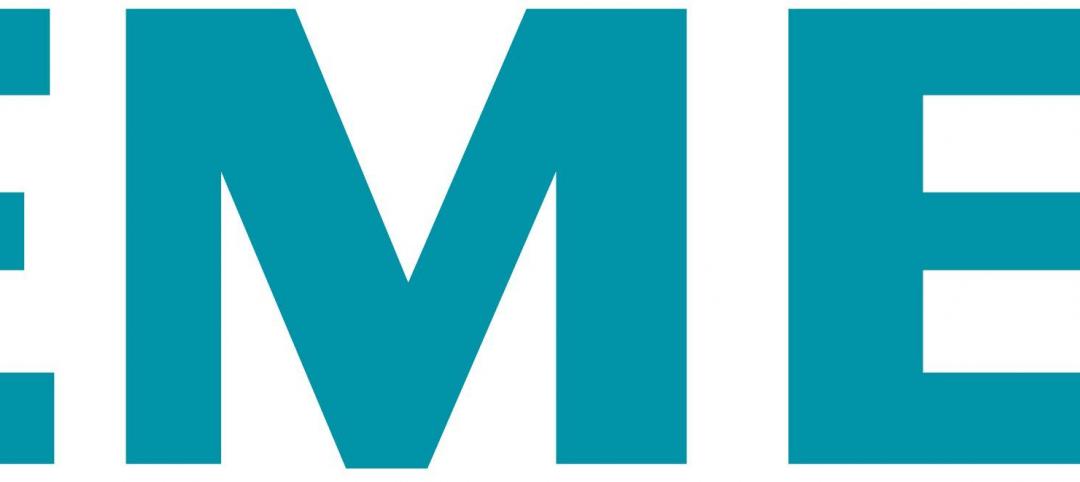While increasing numbers of building projects are now being designed with building information modeling, very few property owners are retroactively applying BIM to their existing buildings.
But that may slowly start to change as a noteworthy initiative on the part of Ohio State University Medical Center to fully convert its 55 Medical Center buildings from AutoCAD to BIM gains attention.
With a deadline set for late summer, the Medical Center is well on the way to its ultimate goal to improve its quality and speed of decision making as it relates to facility use, renovations, maintenance, wayfinding, and energy use. However, the Medical Center has already begun benefitting from their newly converted models.
“We started using the BIM models much quicker than we expected,” said Joe Porostosky, the Medical Center’s manager of facilities information and technology services. “For example, we’re currently renovating our emergency room, and we were able to produce very high-quality renderings and a video walkthrough to show senior leaders some different design possibilities.”
In another instance, the hospital had to decide where to construct a new donor sign. Because the exterior of that particular building had already been modeled, the BIM team could easily present several rendered options of where the sign could be placed. “Our staff was just amazed at how quickly we could move the sign around and show them what that space would look like,” said Porostosky.
INCUBATING THE BIM CONCEPT
The seeds for the BIM conversion idea were first planted in 2008, when Porostosky decided to take a closer look at how the Medical Center was managing its floor plans and what kinds of technology were available. Realizing that Ohio State had access to a lot of Autodesk software at a discounted rate, Porostosky began mulling over the idea of using BIM.
Then, in 2010, he met Brian Skripac, the BIM director at Columbus-based architecture firm DesignGroup, and the two began to formulate a plan. Porostosky also consulted with Western Michigan University for advice, as that institution was going through a similar conversion project, although at a smaller scale.
Once the funding was pulled together and an official process was mapped out, the project officially kicked off in the spring of 2011. Five students were trained in Revit and began the conversion of the AutoCAD drawings, covering 5.7 million sf of building property.
In addition to tracing the original drawings, the conversion team is incorporating an additional level of detail into the Revit models, including exteriors, roofs, and window placement, height and volume, ceilings and floors, and GIS location data.
The emerging BIM models are chalking up some interesting possibilities. For instance, with energy modeling and building performance capabilities, the Medical Center will be able to decided more effectively where and how to upgrade different buildings on a limited budget while complying with the university’s requirement that all renovations attempt to achieve at least LEED Silver.
“The energy analysis aspect of this project is something that’s pretty exciting and is really one of the most important aspects of the project,” says Skripac.
As for operations, the Medical Center is looking at ways in which it can use the BIM models to set up maintenance schedules for items like carpet, tile, and finishes. The team would also like to take equipment-heavy spaces and laser scan the machinery to build into the model so that the engineers know exactly what the mechanical room looks like and can more easily expand the systems as needed.
“The more we get into it, the more we’re finding other values: Now that we have all this data, what can we do with it? For example, how can we improve our wayfinding using BIM?” asked Porostosky. With 34% of the Medical Center’s 1.8 million annual visitors requiring wayfinding help, Porostosky envisions his team can eventually using the Revit models to create video renderings, analyze hallway widths, and identify congestion points.
UNLOCKING THE POTENTIAL OF BIM
Porostosky sees BIM’s huge potential application in the realm of ongoing building operations. Once the Medical Center completes its conversion to BIM, he believes there may even be the opportunity to roll it out across Ohio State’s portfolio of more than 750 buildings.
Skripac sees the higher education and healthcare markets as the most ideal candidates for BIM conversions due to their longer life cycles and the constant space use changes that occur within them. He points out that “often reimbursement opportunities and grant research funding are tied into having up-to-date tracking information and data in terms of how the spaces are specifically being used, and BIM is a great way to accomplish that.” BD+C
Related Stories
| Jan 6, 2012
Doug Wignall named president of HDR Architecture
HDR Architecture, Inc. is known for its award-winning designs for urban environments, campuses and buildings in the healthcare, science and technology, civic, justice and higher education markets.
| Jan 6, 2012
Gensler unveils restoration and expansion of Houston's Julia Ideson building
The "new" building will serve as a repository of Houston memorabilia and rare archival material as well as the city's official reception space and a venue for exhibits, meetings and other special events.
| Jan 6, 2012
New Walgreen's represents an architectural departure
The structure's exterior is a major departure from the corporate image of a traditional Walgreens design.
| Jan 6, 2012
Summit Design+Build completes Park Place in Illinois
Summit was responsible for the complete gut and renovation of the former auto repair shop which required the partial demolition of the existing building, while maintaining the integrity of the original 100 year-old structure, and significant re-grading and landscaping of the site.
| Jan 4, 2012
Siemens acquires Pace Global Energy Services
Acquisition will enhance portfolio with new energy consulting and management services.
| Jan 4, 2012
Shawmut Design & Construction awarded dorm renovations at Brown University
Construction is scheduled to begin in June 2012, and will be completed by December 2012.
| Jan 4, 2012
Skanska acquires Industrial Contractors
Industrial Contractors Inc. is a contractor in the commercial, industrial and power markets of the Midwest. The company employs 2,400 people and in 2011 the revenues are estimated to be approximately $500 million.
| Jan 4, 2012
HDR to design North America’s first fully digital hospital
Humber River is the first hospital in North America to fully integrate and automate all of its processes; everything is done digitally.
| Jan 4, 2012
New LEED Silver complex provides space for education and research
The academic-style facility supports education/training and research functions, and contains classrooms, auditoriums, laboratories, administrative offices and library facilities, as well as spaces for operating highly sophisticated training equipment.
| Jan 3, 2012
Gilbane awarded $88M Contract for Ohio elementary school construction
The new award, which comprises the construction of five new elementary schools and demolition of 11 older facilities, is the latest K-12 building program managed by Gilbane for the Ohio School Facilities Commission since 1998.

















